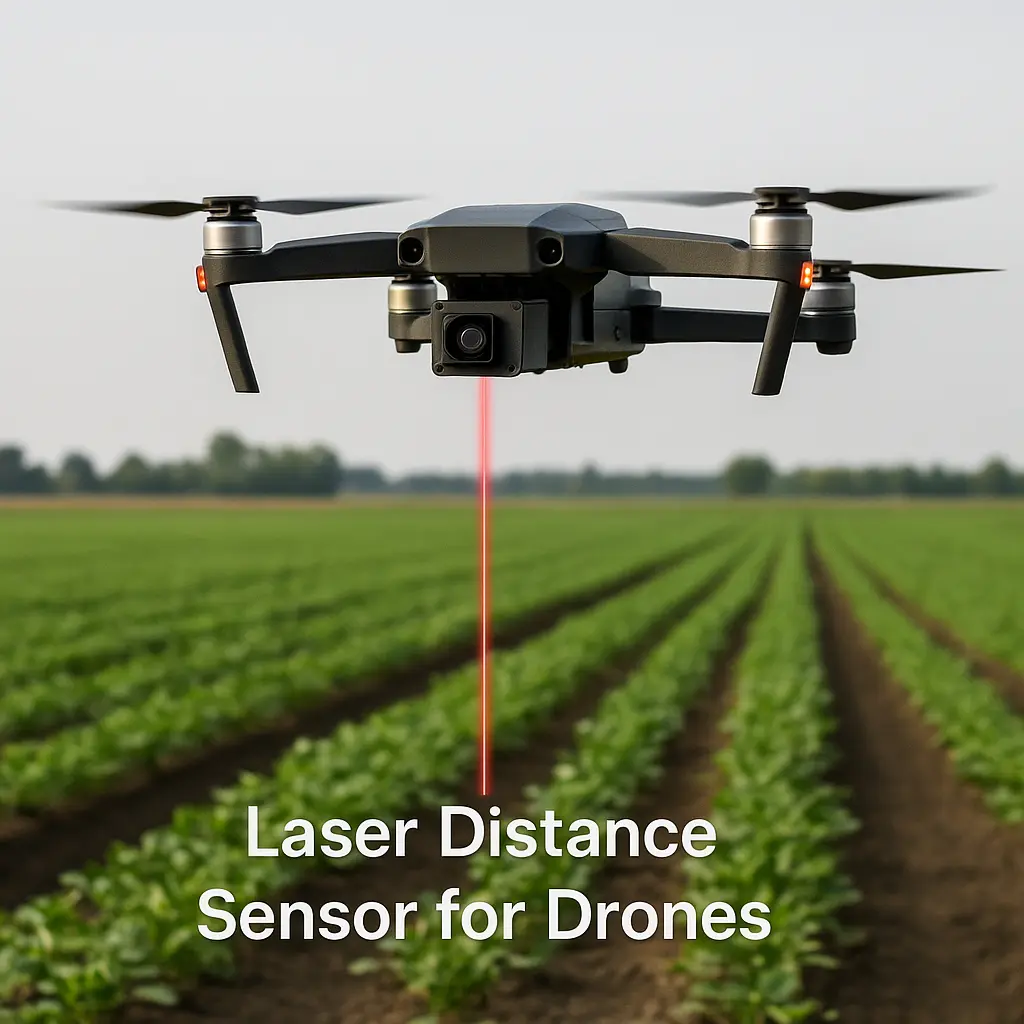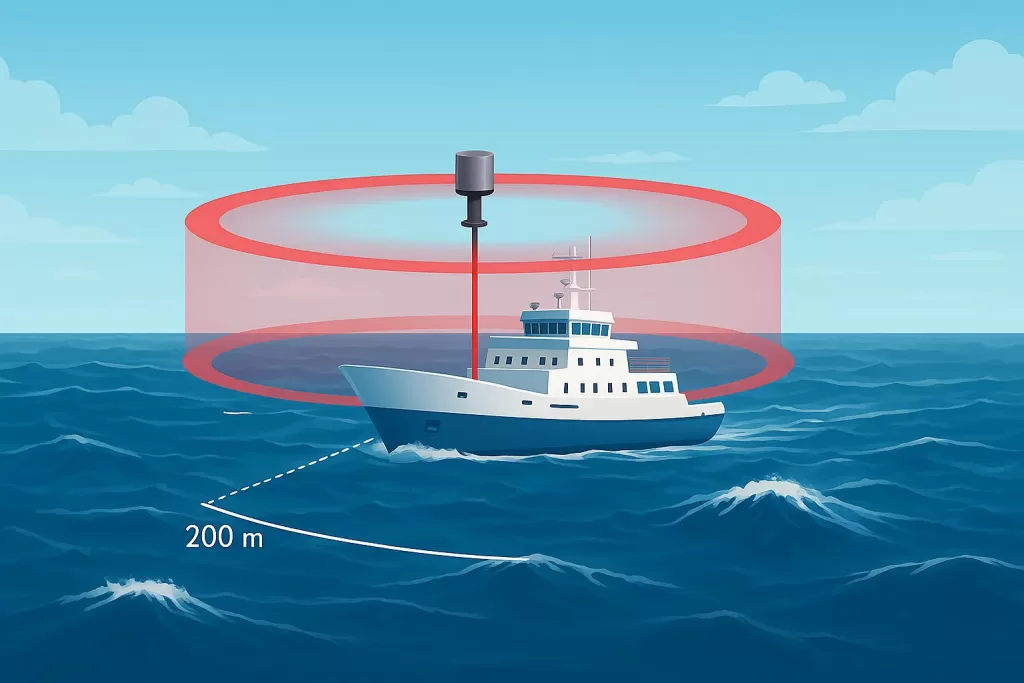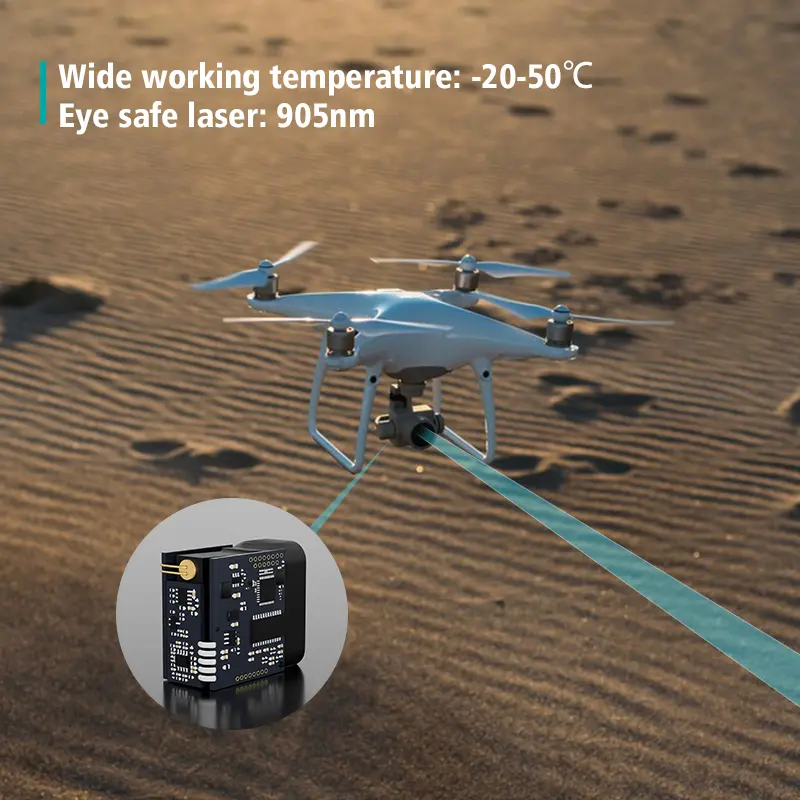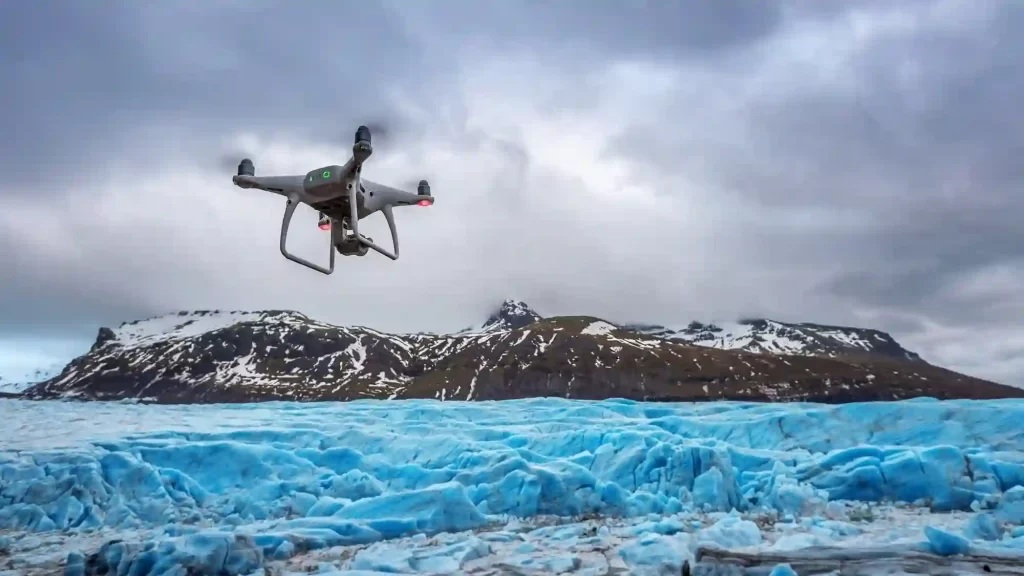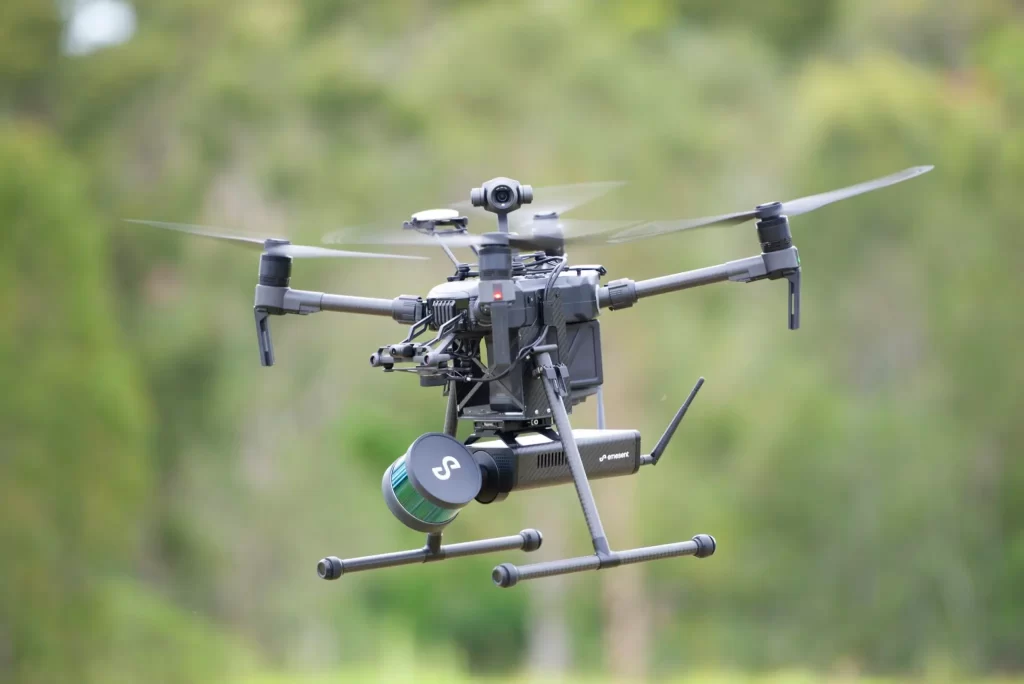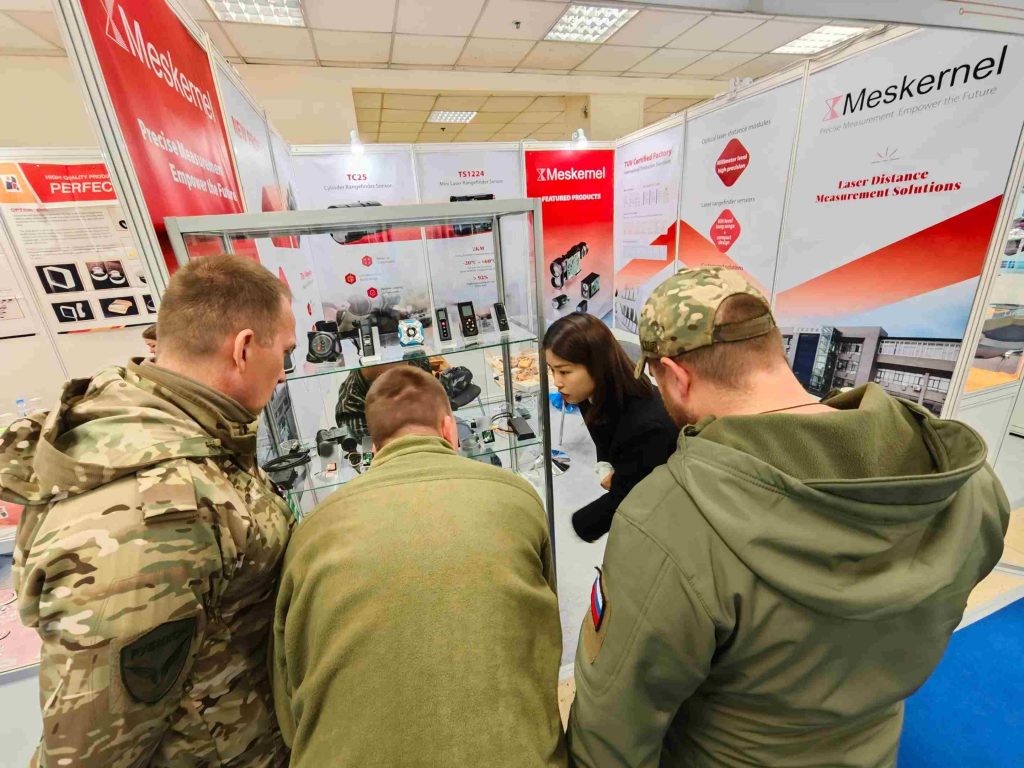As UAV technologies advance, modern drone payloads—whether for inspection, mapping, precision agriculture, LiDAR-assisted surveys, or photogrammetry—require reliable and high-precision sensing. A key component that enables stable flight and consistent data acquisition is the single-point distancia láser sensors, also known as a UAV laser altimeter, non-contact sensor de medición de distancia, or laser height sensor for drones.
These compact modules deliver real-time, millimeter-level distance data, helping UAVs operate safely in complex terrain and demanding outdoor conditions.
1. Why Single-Point Laser Distance Sensors Matter in UAV Pods
Integrating a laser sensor de distancia inside a UAV pod or gimbal offers significant advantages over traditional altitude sources such as GNSS or barometric pressure sensors. A dedicated module provides:
- High accuracy (±1–30 mm) even over low-texture ground, water surfaces, grass, or snow.
- Fast refresh rates (10–100 Hz) for real-time altitude control loops.
- Stable medición sin contacto ideal for low-altitude flights and automated missions.
- Reliable performance in outdoor environments including strong sunlight, fog, dust, and wind.
For UAV manufacturers, this directly improves terrain-following capability, precision landing, pod stabilization, collision avoidance, and low-altitude mapping accuracy.
2. Recommended Specifications for UAV-Mounted Distance Sensors
Drone-optimized distance sensors typically meet the following criteria:
- Rango de medición: 0.1–100 m (up to 200 m+ for long-range UAV applications)
- Precisión: ±1 mm a ±30 mm
- Weight: Below 50 g, suitable for UAV payload limitations
- Interfaces de comunicación: UART / RS485 / CAN / PWM
- Refresh Rate: 10–100 Hz for fast feedback
- Grado de protección: IP65–IP67 for outdoor missions
- Operating Temperature: –40°C to +60°C for harsh environments
These specifications match common requirements for drone altimeters, height-hold sensors, and medición de la distancia sensors for UAV navigation.
3. How Meskernel Sensors Fit UAV Payload Applications
Based on Meskernel’s product line, several sensors are highly suitable for drone pods, mapping UAVs, and inspection drones:
• LDL-T Mini Laser Distance Sensor (Ultra-Light UAV Sensor)
A micro-size module weighing only a few grams, ideal for:
- UAV pod integration
- small drone gimbals
- autonomous landing systems
- lightweight survey drones
→ Recommended: mini sensor láser de distancia for drones, lightweight UAV distance sensor.
• LDL-S Outdoor Precision Sensor (1 mm Accuracy)
Designed for strong sunlight and harsh environments, supporting UART/RS232/RS485.
• LDJ-P7 Long-Range ToF Laser Module (0–200 m)
Rugged IP67 design for large UAV platforms and long-range inspection:
- powerline inspection
- bridge and tower inspection
- terrain mapping
• High-Frequency Industrial Distance Modules (100–3000 Hz)
Ideal for high-speed robotic or drone applications.
4. Common UAV Pod Use-Cases
✔ Terrain-Following & Low-Altitude Flight Control
Sensores láser enable stable height control during:
- crop monitoring flights
- infrastructure inspection
- forest canopy surveys
✔ Precision Landing for Autonomous UAVs
Real-time altitude data ensures smooth and safe autonomous landing operations.
✔ Gimbal & Payload Stabilization
Helps cameras, LiDAR scanners, or EO/IR pods maintain stable positioning.
✔ Mapping, Surveying & Geospatial Data Accuracy
Accurate height improves:
- DEM/DSM accuracy
- photogrammetry models
- georeferenced mapping data
✔ Environmental & Scientific Monitoring
Suitable for monitoring:
- water levels
- snow depth
- vegetation canopy
- ground deformation
In UAV payloads, single-point laser distance sensors provide the core capability needed for real-time altitude measurement, precision landing, terrain following, pod stabilization, and low-altitude autonomous navigation. Whether for mapping drones, industrial inspection UAVs, or environmental monitoring platforms, these compact non-contact sensors enhance reliability, accuracy and flight safety—making modern UAVs smarter, more stable, and operationally more efficient.
For engineers searching for UAV laser altimeters, non-contact distance measurement sensors, high-accuracy módulos de distancia láser, or Sensores ToF for drone applications, single-point sensores láser de distancia remain one of the most valuable and mission-critical components in today’s UAV systems.
FAQ for Single-Point Laser Distance Sensors
-
What is a single-point laser distance sensor and how does it work?
A single-point laser distance sensor is a non-contact measurement device that determines the distance to a target using laser tiempo de vuelo or phase-shift technology. Unlike scanning LiDAR, single-point laser distance sensors measure one precise point, making them highly accurate for industrial automation, positioning, and material handling applications.
-
Why choose single-point laser distance sensors instead of ultrasonic or infrared sensors?
Single-point laser distance sensors offer higher accuracy, longer range, and stronger performance on dark, reflective, or uneven surfaces. Ultrasonic sensors struggle in noisy environments, and sensores infrarrojos have limited range. If your application requires precision measurement, fast response, or long-distance detección, single-point laser distance sensors are the better choice.
-
What are the typical accuracy and measurement range of single-point laser distance sensors?
Most industrial single-point laser distance sensors provide an accuracy between ±1 mm to ±3 mm, with measurement ranges from 0.03 m up to 200 m depending on the model. Long-range versions with reflectors can reach even farther. Always check whether you need short-range precision or long-range outdoor capability.
-
Are single-point laser distance sensors suitable for outdoor use?
Yes. Many industrial single-point laser distance sensors include IP65–IP67 waterproof ratings, high-brightness emitters, and temperature compensation, allowing them to work in rain, fog, dust, snow, and direct sunlight. For harsh outdoor environments, choose models designed for -40°C to +60°C operation.
-
What communication interfaces are available for single-point laser distance sensors?
Common options include:
RS232 / RS485
UART / TTL
Modbus-RTU
4–20 mA analógico salida
0–10 V analog output
CAN / CANopen (for AGV, AMR, robotics)
If your application requires integration with PLCs (Siemens, Beckhoff, Omron), choose a single-point laser distance sensor supporting RS485 or analog output.
-
What industries commonly use single-point laser distance sensors?
Single-point laser distance sensors are widely used in:
Automatización industrial
Robotics and AGV/AMR navigation
Snow depth measurement
Level detection in silos and tanks
Packaging and conveyor systems
UAV altitude measurement
Position feedback for machinery
These industries require reliable and repeatable measurements, which is why single-point laser distance sensors are preferred.
-
How to select the right single-point laser distance sensor for my application?
Consider the following factors:
Required range (short vs. long distance)
Target surface type (dark, shiny, moving, rough)
Accuracy requirements
Sampling frequency (Hz) for fast-moving objects
Operating temperature
Data interface (analog, RS485, Modbus, CAN, etc.)
Indoor vs. outdoor usage
Providing this information helps us recommend the ideal single-point laser distance sensor model.
-
Do single-point laser distance sensors work on dark or reflective surfaces?
Yes. Advanced single-point laser distance sensors include automatic gain control, enabling stable measurement even on:
Black rubber
Glossy metal
Painted surfaces
Rough natural materials
For optimal performance, choose models with high-power emitters or enhanced outdoor algorithms.
-
What is the typical response time of a single-point laser distance sensor?
Response time ranges from 1 ms to 50 ms, depending on the model. High-speed single-point laser distance sensors are ideal for:
High-speed conveyors
Real-time robotic feedback
Dynamic process control
If your machine moves fast, select a model with ≥100 Hz refresh rate.
-
What power supply do single-point laser distance sensors require?
Most sensors operate on:
5V DC for embedded modules
9–30V DC for industrial units
Always check the datasheet before installation.
-
Are single-point laser distance sensors easy to install?
Yes. Installation typically involves:
Mounting the sensor toward the measurement target
Connecting power
Selecting the correct output mode (analog / RS485 / Modbus)
Configuring parameters via PC software if needed
We also provide recommended mounting brackets for stable positioning.
-
How much do single-point laser distance sensors cost?
Pricing depends on range, accuracy, and interface. Entry-level modules start at low cost, while industrial-grade sensors for long-distance or harsh outdoor environments are priced higher. Contact us with your range and accuracy requirements to receive a detailed quotation.
-
Do you provide technical support and OEM customization?
Yes. We support:
OEM/ODM optical module customization
Firmware modification
Interface customization
Cable and connector options
Long-range or ultra-high-accuracy versions
If your project needs a custom single-point laser distance sensor, we can provide engineering support.
-
What is the difference between single-point laser distance sensors and 2D/3D LiDAR?
Single-point sensors: Measure one precise distance point; cost-effective; ideal for vertical or horizontal positioning.
2D/3D LiDAR: Produces a full point cloud; expensive; used for mapping and navigation.
If your application only needs distance, height, or level measurement, a single-point laser distance sensor is more economical and easier to integrate.
-
Can single-point laser distance sensors be used for snow depth measurement?
Yes. They are ideal because they offer:
Alta precisión
Fast response
Reliable measurement on white/reflective snow
Strong outdoor temperature resistance
For snow applications, choose sensors with long-range capability and IP67 protection.
